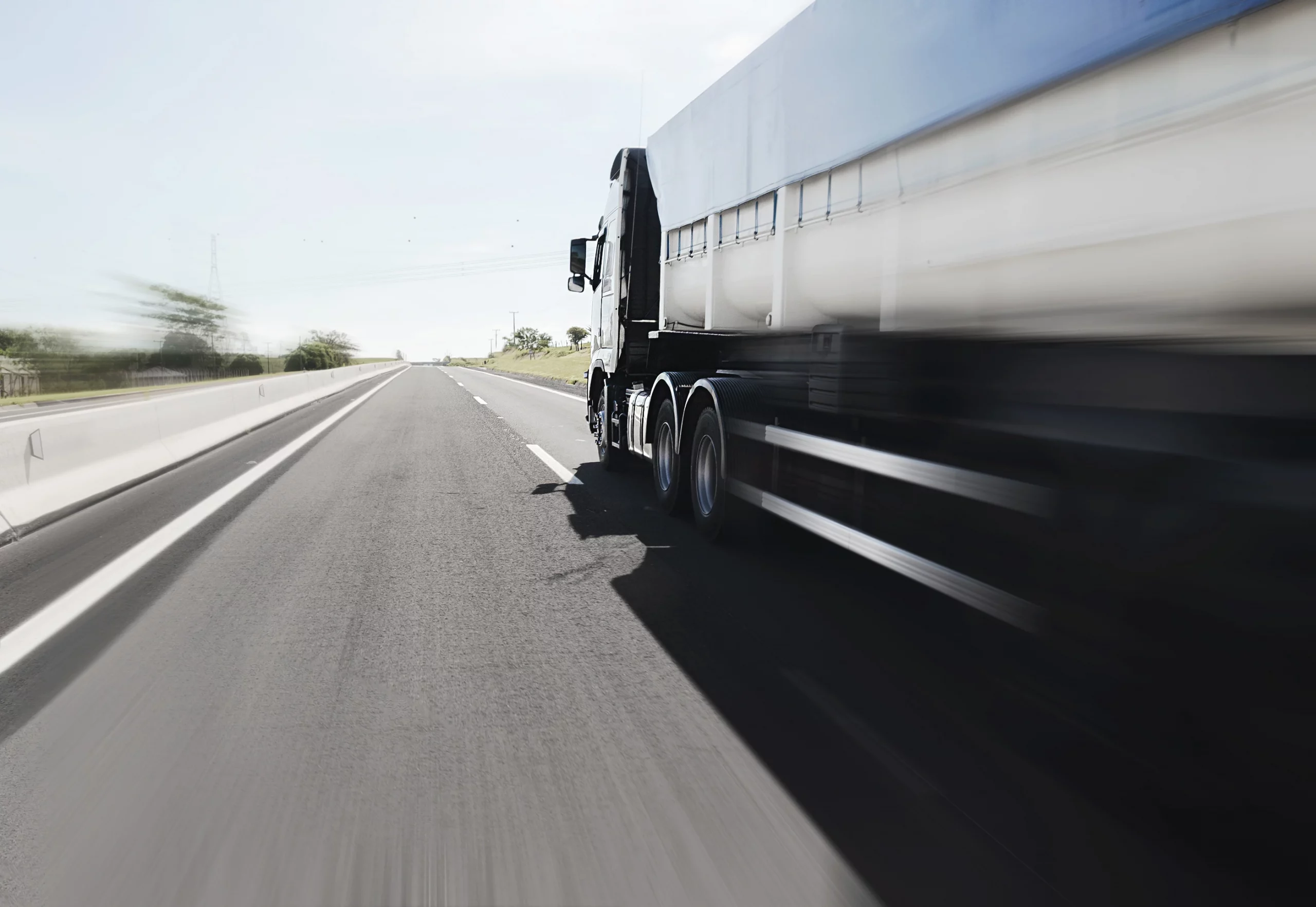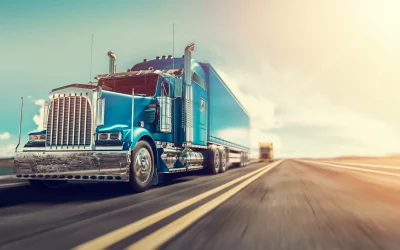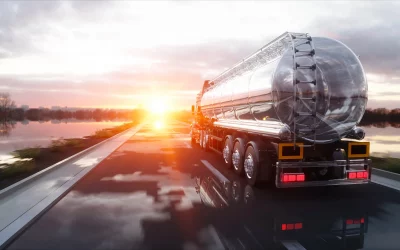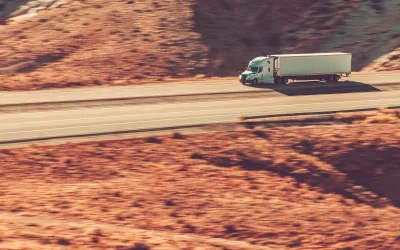The Best Truck Accident Lawyers in Denver
Do you know the difference between a box truck and a large rig? What’s the difference between your delivery car and your dump truck? Yes? No? Is that possible? Continue reading to find out!
I know what you’re thinking: what’s the purpose of reading about truck kinds on a blog? And I am aware of your concerns. It probably comes off as a bit, shall we say, basic. There is, however, a method to my madness. In my legal practice, I often defend truck accident victims.
An accident with a car may completely devastate a person’s life. Believe me when I say that. It’s happened to me before. I’ve also realized that some of my clients’ lives were flipped upside down by a truck accident because they were unaware of how deadly certain trucks are, at least under certain road conditions. They were on the same path as a monster and didn’t realize it until it was too late.
In other words, the adage remains true when it comes to avoiding collisions with large trucks: the more you know, the farther you’ll travel. Reading up on the many sorts of trucks you’ll see on the road can help you recognize danger when it appears, as well as provide you with the information you’ll need to accurately report a truck collision to the police, insurance companies, and your attorney.
Tractor-trailers, semi-trucks, and big rigs
According to the American Trucking Associations, a tractor-trailer is a “truck and semitrailer combo,” according to the American Trucking Associations. The engine and cab, or more properly, a “car built mainly to tow a semitrailer using a fifth wheel installed above the back axle,” are the “tractor” parts.
The tractor pulls a “truck trailer supported at the back by its wheels and the front by a fifth-wheel attached to a tractor or a dolly,” or “truck trailer supported at the rear by its wheels and the front by a fifth-wheel fixed to a tractor or a dolly.” So, that’s essentially what it says on the tin.
The majority of people can recognize a tractor-trailer when they see one. On the highway, this is the most typical truck arrangement. It also has the potential to be the most hazardous.
Colorado impose height, length, and weight restrictions on trucks’ roads, bridges, and highways. Even if trucks adhere to those restrictions (and trust me, that’s a big “IF”), they pose a slew of dangers to drivers of smaller cars.
Then there are the massive blind areas. The driver of a conventional tractor-plus-one-trailer semi is “blind” to the region 20 feet in front of his cab, 30 feet behind his trailer, one lane-width over his left shoulder extending to the rear of the truck, and two lane-widths to his right spanning the whole length of the car.
If a truck driver can’t see you in his rear-view mirror, he can’t see you either! That means the truck might change lanes directly in front of your car without even realizing it until it’s too late.
Next, every tractor-trailer is at risk of rolling over, particularly on steep bends, at highway speeds, on highways with narrow shoulders, and/or in strong crosswinds (in other words, everywhere, all the time).
Tractor-trailers are tall and have a lot of weight on the top. They transport goods that may move dangerously if not secured adequately. And if just one tractor wheel deviates from the road surface into a low shoulder, the whole rig may easily topple.
I haven’t even addressed two of the most dangerous conditions that cause these beasts to collide: truckers who travel too fast and with little sleep. Trucks cannot stop in time to prevent crashes due to this combination.
So, be cautious if you encounter a tractor-trailer on the road.
Truck with a Tank
Tankers are simply tractor-trailers with liquid-transporting tank trailers. Some tankers transport commodities such as water or milk, creating traffic congestion and even a mess if spilled.
On the other hand, other tankers transport flammable or hazardous (or both) liquids that might cause complete havoc not just on the road but also in the towns around it. That is why state and federal governments need tanker truck drivers to get specific licenses and adhere to significantly stricter safety regulations than semi-truck drivers.
STILL, accidents involving these cars occur, resulting in injuries and disruption. Tanker truck accidents may result in fatal explosions in the worst-case scenario. When a truck carrying “safe” goods like milk collapses, though, it may wreak all kinds of problems.
Be cautious of any tanker truck you come across. They have the SAME blind zones as a standard tractor-trailer, but with the extra threat of potentially lethal payload.
What’s the status of the tank? It’s a safe guess that it’s not anything concrete. Otherwise, the sky is the limit. Liquefied gases, fuels, industrial chemicals, food-grade liquids, and even raw sewage are transported by tankers.
Tankers increase the danger on the road by transporting cargo that may do massive damage if it exits the tank and spills onto the road or into the environment. Explodes flammable cargo noxious freight sickens. Cargo that is sticky, stinky, slimy, and negative makes a huge mess and causes accidents. Give these monsters the room they need.
Box trucks, straight trucks, and delivery trucks are all types.
A box truck may easily be mistaken for a tractor-trailer. Many of them (but not all) feature a cab and a lengthy cargo box. On the other hand, Box trucks are a single unit, and tractor-trailers are two cars coupled to each other.
The cargo “box” cannot be removed since it is an integral car element. Typically, rental moving cars are box trucks. Most delivery cars are, too, including those that transport specialist items such as drinks, food, or construction supplies.
Don’t be fooled into believing that these trucks are different in their dangerousness. Yes, since they’re generally smaller than tractor-trailers, their blind areas are just a little smaller. However, these trucks are still very hazardous because they often travel on city and rural (non-highway) roads, where lanes are shorter, shoulders are narrower, bends are tighter, and traffic is greater. As a result, box truck drivers confront more unknown road dangers and endanger more people than drivers of larger cars.
Oh, and there’s one more thing to think about. Many box trucks only operate inside a state’s borders. As a result, its owners and drivers may be subject to fewer rules than truckers and transportation businesses operating across state boundaries.
In other words, compared to semi-trucks, box trucks are often in inferior condition and have less-skilled drivers. So be cautious while sharing the road with these ostensibly safe cars.
Trucks that transport waste
A dump truck can be recognized by almost any three-year-old. But, just in case you don’t recognize one, these are the trucks with the large open container on the back that tips up and drops its cargo (Come on, admit it, you already knew that). Right!?). Dump trucks transport raw materials for heavy industries, notably construction, from one location to another.
You’re probably sick of hearing it, but when it comes to sharing the road with a dump truck, the same laws of safety apply. You know the drill: big, hefty, blind spots. The additional hazard posed by dump trucks is because they spill cargo. Quite a bit. A lot, a lot, a lot, a lot, a lot, a lot, a lot, you understand what i’m talking about.
I know you do since anybody who travels on the highway has experienced the annoying experience of following a dump truck spewing gravel into the glass, causing it to break. That’s irritating enough, but picture what happens if a whole load of gravel, sand, or wood chips falls out simultaneously. Disaster.
Trash Trucks
Garbage trucks are similar to delivery trucks. However, they operate in the other direction. They clog up local streets, stopping often and inexplicably. However, they do not dump down objects; instead, they pick them up—garbage cans with smelly, filthy objects.
But here’s the thing: there’s a catch. Garbage trucks do sometimes drop objects. They leave a trail of trash and debris in their wake, causing other cars to swerve or stop suddenly, perhaps causing an accident. Garbage trucks also have large blind areas and weary and overworked drivers. Do you have any idea what it means? Dangerous crashes and serious injuries, to be sure.
It’s never a good idea to become too used to driving alongside a trash truck. They may be a common sight in almost any American neighborhood. That isn’t to say it’s always safe to drive beside them.
Trucks that transport cement
Concrete mixers, commonly known as cement trucks, are among the most hazardous cars on the road. It’s true. Why? Because they are heavy.
These cars may weigh more than 60,000 pounds when laden with wet concrete, the same as a fully loaded tractor-trailer. On the other hand, Cement trucks are substantially smaller in size, making them more top-heavy than other cars of the same size, such as trash trucks and dump trucks. To avoid tipping over, top-heavy cars must be handled with caution. Isn’t it terrifying?
Cement trucks, too, do not need to go quickly to roll over. Because of their heavyweight takes longer to stop, change lanes, turn, or complete any other driving move because of their heavyweight. When untrained or reckless drivers lose control of their cement truck, the cement may pour all over the road or highway, resulting in a serious accident.
Another reason cement trucks are risky is the often high speed at which they move. Cement truck drivers must deliver their concrete before it dries up, which is a tough timetable for all truck drivers. As a result, drivers are compelled to travel at a high rate to reach where they need to go.
Due to a strong emphasis on time management, some cement truck drivers may fail to properly maintain or check their cars, increasing the risk of accidents. Cement trucks are also infamous for being noisy and may induce hearing loss. Those who spend a lot of time near concrete mixers should wear hearing protection to avoid hearing damage.
Trucks with flatbeds
A flatbed truck is a truck that has a flatbed trailer. They transport goods that are oddly shaped or too large to fit in a standard-sized box trailer. Flatbed cars exist in various sizes, including semi-truck lengths, although most trailers are about 48 feet long.
Flatbed trucks, both rigid and articulated, may also be seen on the road. Rigid trucks directly connect the trailer and the cab, with no pivot point or hitch. When turning, articulated cars feature a hitching system around which the trailer pivots.
Although some are wider, the vast majority of flatbed trucks are the maximum width authorized by the Federal Motor Carrier Safety Administration (FMCSA). After enterprises have secured a special authorization enabling them to use public highways, you may observe these flatbeds hauling “wide cargoes.”
Giant cargoes aren’t supposed to be on the road, but they may receive special permissions to do so. We understand why. Businesses can’t function if they sometimes transport something big down the road. On the other hand, Wide loads pose several dangers to other drivers.
When the weather is severe, they act erratically. They occupy more than one lane, making overtaking them difficult and dangerous. When they get into accidents, they may make a huge mess at best and inflict catastrophic injuries and deaths at worst. As with the other trucks mentioned above, give these cars the room they need.
Emergency cars such as fire trucks and ambulances
Everyone is familiar with the appearance and sound of a fire car. The majority of people are also aware that the law grants certain cars unique advantages. Drivers in Colorado and Colorado must yield the right-of-way to approaching emergency cars, such as fire engines.
When cars come upon a stopped emergency car on the side of the road, they must slow down and, if feasible, shift over to make room for it. These laws are intended to keep first responders safe while doing their duties.
However, these restrictions do not absolve fire truck drivers of their obligation to drive safely. Fire cars are known for travelling at great speeds (or at least, at high speeds for the roads where they drive). They’re a ton of weight. And its drivers are aware that they possess the above-mentioned exceptional rights, which might lead to dangerous behavior.
When a fire truck passes through an intersection with its lights flashing and siren blaring, it’s one thing for the driver to expect people to move over or remain out of the way. It’s another thing entirely for the motorist to fail to take reasonable precautions to ensure that he is seen and heard by others on the road.
Put another way, just because you have a specific responsibility as a motorist to cede the right of way to fire trucks, and other emergency cars, don’t permit them to smash your car just because you don’t respond fast enough.
On the road, be vigilant, and allow emergency cars all the room they need. However, I don’t think a fire truck driver can get away with driving erratically and out of control.
Delivery Cars
If you truly want to dispute the argument, all trucks are delivery cars. But I’m referring to smaller commercial vehicles like those used by grocery shops or those driven by FedEx and UPS employees.
Here’s the issue with delivery trucks: they’re hazardous. It isn’t their size that is the issue. Yes, they’re larger than a typical passenger car, and they have blind spots, so that’s a given. But it’s the enormous number of these trucks on smaller, residential routes, along with the relative inexperience of many of their drivers, that makes them deadly. Delivery cars increasingly clog neighborhood streets as online shopping expands, endangering children, joggers, cyclists, and pets.
Although the license standards for delivery truck drivers are not as stringent as those for large rig truckers, delivery drivers nonetheless work long hours and adhere to rigid timetables. They cut corners (literally and metaphorically) to save time and money. Innocent motorists, bicyclists, and pedestrians are hurt as a result.
Towing Cars
Tow trucks, as the name implies, transport broken-down cars. You undoubtedly have an image of a tow truck in your mind, but there are four distinct kinds of tow cars.
Each one has its own set of benefits and drawbacks.
Flatbed tow trucks, often known as rollback tow trucks, do not officially “haul” a car. Instead, drivers use hydraulic controls to shift the bed.
Hook and chain tow trucks used to be the most popular form of truck for towing firms, but they’ve gone out of favor. These trucks will be pulling a car by its back tires as they go down the road.
Because hook and tow trucks may harm cars, most businesses only employ them to transport rust buckets and beaters. This may result in an accident if the car isn’t robust enough to endure the towing strain and breaks free, resulting in a deadly collision.
Wheel lift tow trucks are the newest generation of hook and tow trucks, and they’re quickly becoming the towing industry’s preference. On the other hand, wheel lift tow trucks elevate the back tires off the ground, lowering the risk of damage to the cars they pull.
An integrated tow truck is used to tow huge cars such as semi-truck cabs, other trucks, buses, and other large things. When the metal yoke used to pull the truck isn’t firmly linked to the car, adjacent motorists risk being involved in a tow truck accident and suffering serious injuries.
Integrated tow trucks are more stable than other tow trucks because they include additional axles to handle the weight of huge cars and a boom arm in the middle of the truck. Integrated tow trucks are the safest tow trucks available. However, if the truck loses the large cars it is pulling, it might be fatal.
Could you describe the truck that you’re sharing the road with?
So, it’s time for a pop quiz. Are you prepared to describe the car you see on the highway? Nobody expects you to scrutinize every aspect of every car you come across. Do you, however, have the knowledge to recognize and analyze the threats that a car can pose? Let’s review:
A tractor-trailer, which is tall, long, and has an articulated connection between the tractor and trailer components, is most likely to be seen on the highway.
What seems a tractor-trailer on city streets and country highways, maybe a box truck.
Does the trailer have a rounded cylinder shape? You’re staring at a tanker truck if that’s the case.
Is it heavy, filthy, noisy, and spilling sand or gravel cargo? It’s a commercial car.
Does it obstruct more than one lane? That’s a substantial burden.
Does it have brilliant colors, flashing lights, and a siren? That one, I’m sure you’re familiar with.
What is the significance of being able to recognize trucks? As I previously said, understanding the sort of car you see allows you to avoid the threats it brings. It’s also crucial to precisely characterize a truck in the event of an accident.
As a personal injury lawyer representing truck accident victims, it’s critical to share information with insurance companies and opposing counsel concerning the car that caused the collision. Small details may often make the largest impact in a case.
Accidents involving trucks should never happen, yet they do. So, what’s next?
That’s all there is to it—your guide to the different sorts of trucks you’ll see on the road. If you have any more concerns concerning a truck accident or your rights if you have been harmed in one, please contact a knowledgeable truck accident attorney immediately away.
Warrior Car Accident Lawyers
1902 W. Colorado Ave., Suite 100
Colorado Springs, CO 80904







